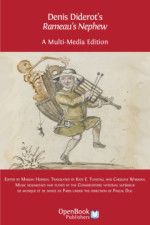In a Pilgrim's Footsteps
In September 2011, I found myself standing on a rock on the shore of Lake Peipsi, the huge stretch of water that lies between Estonia and St Petersburg, peering out across the haze in the hope of catching a glimpse of the Russian shore. Behind me stretched a row of houses still lived in by Old Believers, religious dissidents whose ancestors fled here hundreds of years ago, after refusing to accept the ritual innovations introduced to the Russian Orthodox Church by Patriarch Nikon. Strings of vegetables hung drying in the porches. In the background was an Old Believer Church topped by its distinctive cross. Eighty-five years earlier, the traveller and writer Stephen Graham had stood here too, staring across towards the country which had helped to define his early life. I was here following in Graham’s footsteps, writing what would become Beyond Holy Russia: The Life and Times of Stephen Graham.
Graham made his reputation with a series of books and articles describing his huge hikes – ‘tramps’ he called them – across the Tsarist Empire in the years before the 1917 Revolution. The Russia he put before his readers’ eyes was not the Russia of growing cities and impoverished villages. It was instead a kind of fantasy world of gold domes and peasant spirituality, a place far apart from the pedestrian world of suburban London, where Graham had spent most of his childhood. Russia had become for him, long before he set foot there, a kind of fantasy place of intrigue and mystery. When he finally went to live there, in 1908, he went in search not just of a place. He also went, to use the language of the hippies who flocked to Nepal in the 1960s, to find himself.
I was interested in Graham because, like him, I had been fascinated by Russia since childhood. When I was seven or eight, my godfather gave me a book of the nature sketches written in the 1850s by Sergei Aksakov, whose lyrical memories of a childhood spent in the wilderness of European Russia fascinated me. I caught small fish in a lake surrounded by dozens of other anglers. Aksakov caught huge fish in the company of his serf-minder, pulling them from rivers and lakes in a landscape of forests and meadows, inhabited by Christian serfs and Tatar nomads. It was probably inevitable that Russia would become the focus of my professional career – I wrote my PhD on Aksakov and his family – while my own love of walking meant that Graham became a figure who fascinated me with his descriptions of long hikes in search of the mystery of Holy Russia.
Graham has long been a forgotten person even though he lived until 1975 (he was ninety when he died). The Spanish author Javier Marías even wrote a book about Graham and his friend Wilfrid Ewart, predicated on the idea that both men had passed out of the pages of history, fading to ghosts who could only be revived by the novelist’s art. When I first decided to write about Graham, I planned to follow in the footsteps of his massive tramps across pre-revolutionary Russia in order to see how the places he visited had changed over the course of a hundred years. But the more I knew about him, the more I realised what an amazing life he led, one which continued long after the Bolshevik Revolution had exiled him from the country that so enthralled his imagination as a young man.
Graham served in the trenches of the First World War in 1918. In the following years he travelled through the chaos of a Europe ripped apart by war, visiting countries from Estonia in the north to Turkey in the south, as well as making a number of trips to the USA. He hiked across the American south-west, attending rodeos and visiting native American villages, later falling in love with the urban clamour of New York. In the 1930s he spent several years in Yugoslavia, where he wrote a series of novels and biographies, as well as finding the time to hike in southern Africa. Throughout the Second World War he lived in London, describing the horrors of the blitz, as well as editing a publication that traced the fortunes of the Orthodox Church both in Russia and occupied Europe. He continued to live in Soho for three decades after 1945, writing occasional poetry reviews and a number of little-read books, gradually falling from public view as his health failed.
Graham was as much a pilgrim as a traveller. He travelled not so much in search of landscapes and experiences, but rather in the hope of finding what he called a ‘Somewhere-Out-Beyond’, a place where the fabric of everyday life was transformed and given a significance beyond the pursuit of money and security. Graham was a dreamer – but a canny dreamer – who combined the instincts of the mystic with the sharp eye of the travel-writer. As a young man he lived in peasant huts, but back in London he advised Lloyd George about Russia and won the patronage of the newspaper baron Lord Northcliffe. The more I found out about him, the more I became fascinated by him, intrigued as much by his restless quest for meaning as his views about Russia. As I stood on the shore of Lake Peipsi, staring across to Russia just as Graham had more than eight decades earlier, I felt more ‘connection’ to my quarry than I ever had before. Russia was for Graham both a place and a myth. His life was dominated by the search for somewhere spared from the petty cares and trivialities of modern life. Most of the places he knew – from America to Asia, Europe to Africa – have been transformed since he visited them. But Graham was always searching for something immune from the ravages of time. Perhaps we all are.
Beyond Holy Russia: The Life and Times of Stephen Graham examines the long life of the traveller and author Stephen Graham. Graham walked across large parts of the Tsarist Empire in the years before 1917, describing his adventures in a series of books and articles that helped to shape attitudes towards Russia in Britain and the United States. This book traces Graham’s career as a world traveller, and provides a rich portrait of English, Russian and American literary life in the first half of the twentieth century. It also examines how many aspects of his life and writing coincide with contemporary concerns, including the development of New Age spirituality and the rise of environmental awareness. The result is a fascinating portrait of a man who was for many years a significant literary figure on both sides of the Atlantic.



